Statutory debt solutions and diligence - policy review consultation: summary of responses
Summary report of the responses received to our proposals for reforms to the Scottish statutory debt solutions and debt recovery mechanisms (diligence).
iii. Summary of Responses
The following is an executive summary of the responses to the proposals in the consultation:
Theme 1 – protections, information and advice prior to debt solutions
Proposal 1.1. Design detailed proposals for the introduction of a specific mental health process as part of the statutory moratorium – in collaboration with mental health and debt specialists.
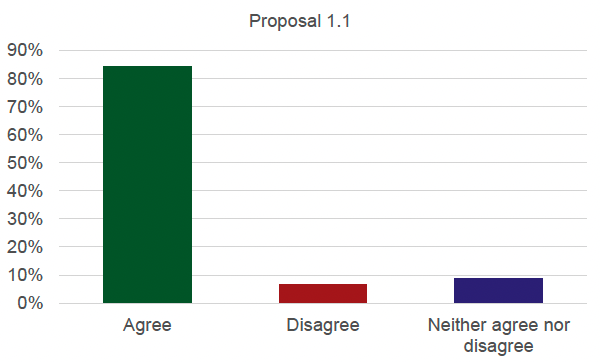
- 93% of respondents to the consultation answered this particular question.
- 84% of those respondents agreed with the proposal.
Proposal 1.2. Introduce a new requirement to provide an individual with a clear and succinct information leaflet for those considering a trust deed. This should form part of the process required for a trust deed to gain protection.
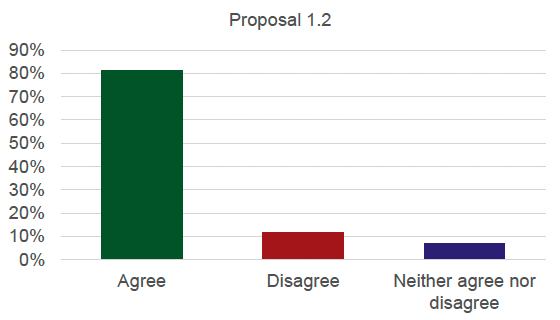
- 93% of respondents to the consultation answered this particular question.
- 81% of those respondents agreed with the proposal.
Proposal 1.3. Take action to streamline the Debt Advice and Information Package to ensure key messages are clear and available to the person with debt at the earliest stage prior to formal debt recovery action.
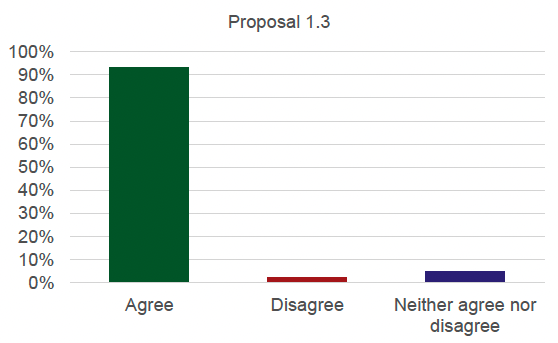
- 93% of respondents to the consultation answered this particular question.
- 93% of those respondents agreed with the proposal.
Proposal 1.4. Simplify the language and terminology used in relation to diligence on our websites and publications wherever possible.
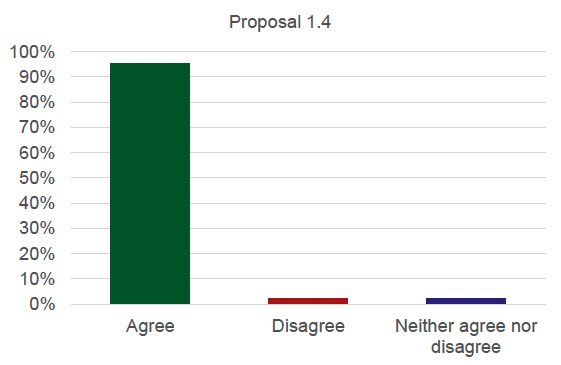
- 93% of respondents to the consultation answered this particular question.
- 95% of those respondents agreed with the proposal.
Theme 2 – debt solutions – entry criteria
Proposal 2.1. Remove the minimum debt threshold for Minimal Asset Process bankruptcy.
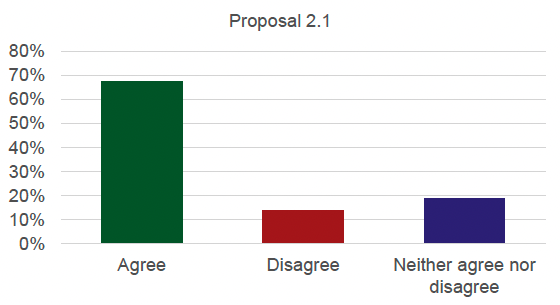
- 93% of respondents to the consultation answered this particular question.
- 67% of those respondents agreed with the proposal. 14% disagreed with the proposal and 19% neither agreed nor disagreed.
Proposal 2.2. Remove the single value asset threshold when applying for a Minimal Asset Process bankruptcy and review and uprate the current total assets threshold.
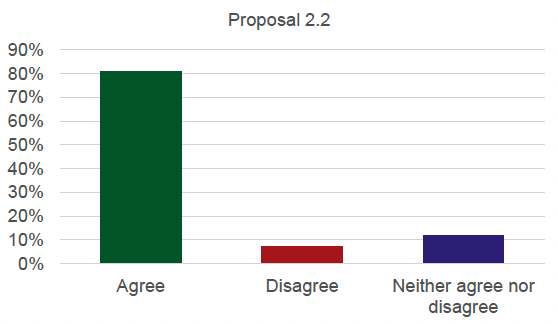
- 91% of respondents to the consultation answered this particular question.
- 81% of those respondents agreed with the proposal.
Proposal 2.3. Retain the £5,000 minimum debt level for accessing PTDs.
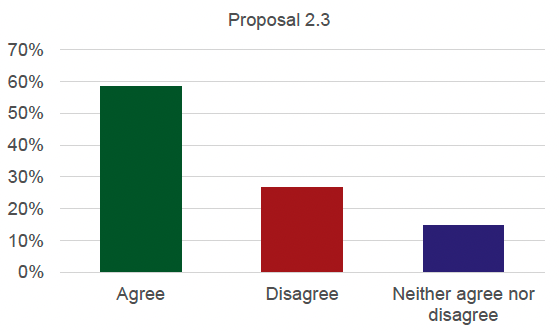
- 91% of respondents to the consultation answered this particular question.
- 59% of those respondents agreed with the proposal. 27% disagreed with the proposal and 14% neither agreed nor disagreed.
Theme 3 – administration of debt solutions
Proposal 3.1. The income and expenditure methodology remains as the framework for the Common Financial Tool.
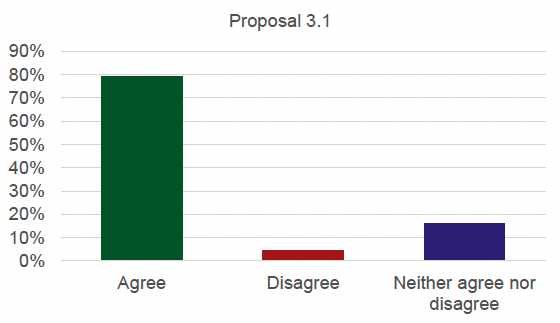
- 93% of respondents to the consultation answered this particular question.
- 79% of those respondents agreed with the proposal. 5% disagreed with the proposal and 16% neither agreed nor disagreed.
Proposal 3.2. The Standard Financial Statement replaces the Common Financial Statement as the statutory Common Financial Tool for Scottish debt solutions.
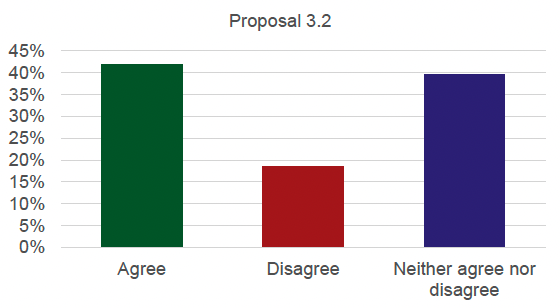
- 93% of respondents to the consultation answered this particular question.
- 42% of those respondents agreed with the proposal. 18% disagreed with the proposal and 40% neither agreed nor disagreed.
Proposal 3.3. Retain the current process of taking the full surplus income for contributions in bankruptcy and to insert a provision to enable the necessary flexibility to deal with one-off support payments issued by government to help people through a cost of living crisis or similar.
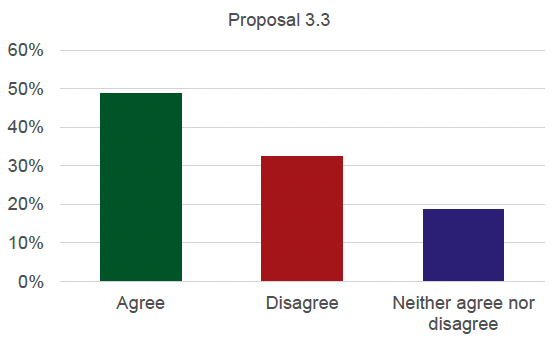
- 93% of respondents to the consultation answered this particular question.
- 49% of those respondents agreed with the proposal. 33% disagreed with the proposal and 18% neither agreed nor disagreed.
Proposal 3.4. Retain the current repayment periods in debt solutions.
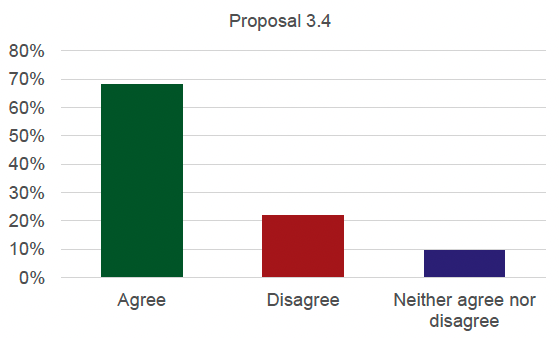
- 89% of respondents to the consultation answered this particular question.
- 68% of those respondents agreed with the proposal. 22% disagreed with the proposal and 10% neither agreed nor disagreed.
Proposal 3.5. Ensure mobility scooters are excluded from asset criteria for entry into bankruptcy and from vesting with the trustee.
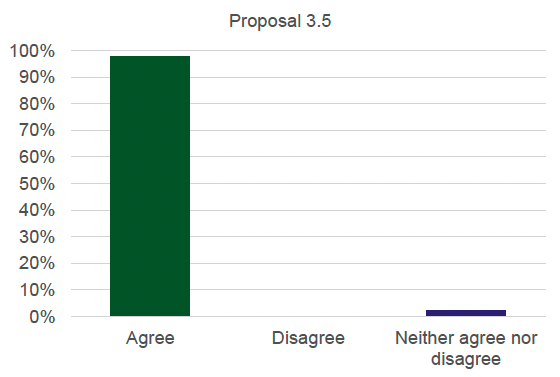
- 93% of respondents to the consultation answered this particular question.
- 98% of those respondents agreed with the proposal.
Proposal 3.6. Commission further work to help inform Stage 3 of the review where further consideration can be given to how to treat vehicles in bankruptcy in the future. AiB will also review the guidance to provide further clarity for trustees.
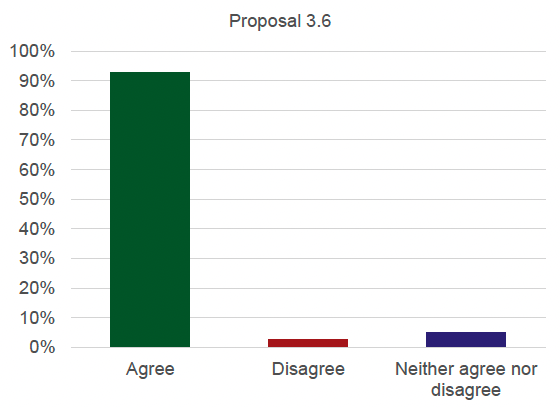
- 89% of respondents to the consultation answered this particular question.
- 93% of those respondents agreed with the proposal.
Proposal 3.7. Review and uprate the existing vehicle threshold while consideration is given to whether a more fundamental change is necessary.
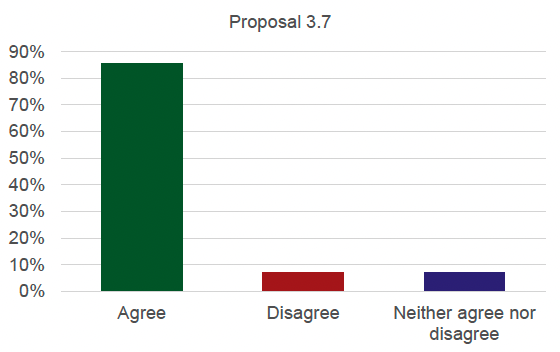
- 91% of respondents to the consultation answered this particular question.
- 86% of those respondents agreed with the proposal.
Proposal 3.8. Take forward legislation to provide for the best practice processes laid out in the Protected Trust Deed Protocol. This will include debtor discharge and payment of a dividend at 12 months - including a requirement to report on the position annually.
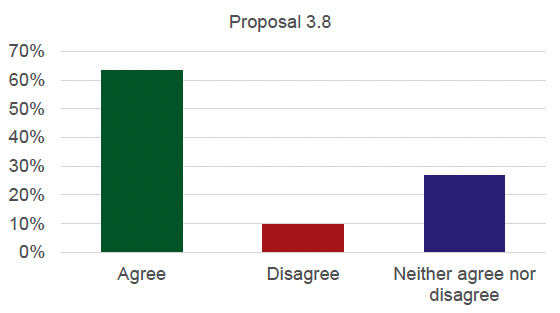
- 89% of respondents to the consultation answered this particular question.
- 63% of those respondents agreed with the proposal. 10% disagreed with the proposal and 27% neither agreed nor disagreed.
Proposal 3.9. To take forward a dedicated technical review through a short-life working group comprising of insolvency specialists to identify efficiency measures that have capacity to reduce administration costs (and resultant increase in creditor returns) with no detriment identified for any parties involved. No change is proposed to the existing timescales for setting out proposals for contributions in bankruptcy.
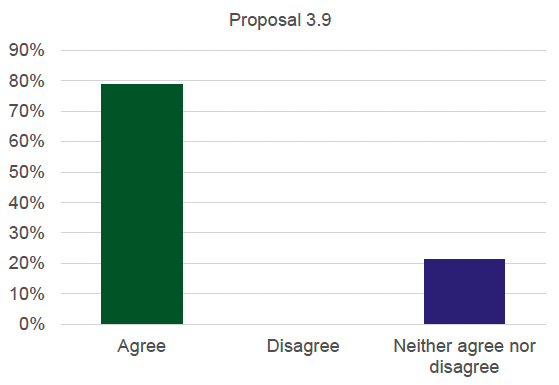
- 91% of respondents to the consultation answered this particular question.
- 79% of those respondents agreed with the proposal. No one disagreed with the proposal and 21% neither agreed nor disagreed.
Proposal 3.10. To retain the existing arrangements where an individual dies while in a Protected Trust Deed.
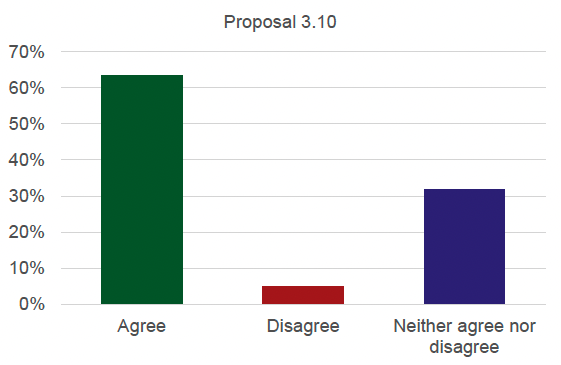
- 89% of respondents to the consultation answered this particular question.
- 63% of those respondents agreed with the proposal. 5% disagreed with the proposal and 32% neither agreed nor disagreed.
Theme 4 – exit from debt solutions[1]
Proposal 4.1. Composition process to be investigated for Protected Trust Deeds.
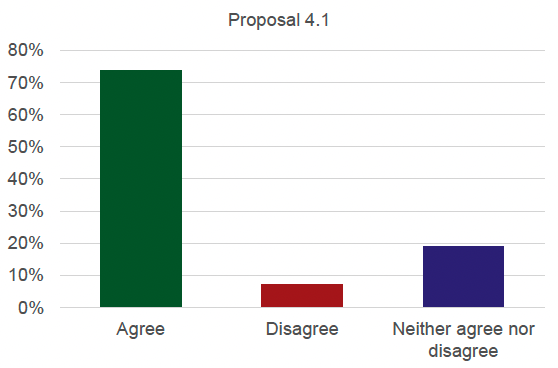
- 91% of respondents to the consultation answered this particular question.
- 74% of those respondents agreed with the proposal. 7% disagreed with the proposal and 19% neither agreed nor disagreed.
Proposal 4.2. Explore options for greater flexibility to deliver early discharge from a Protected Trust Deed in specific circumstances – including the appropriate consent criteria.
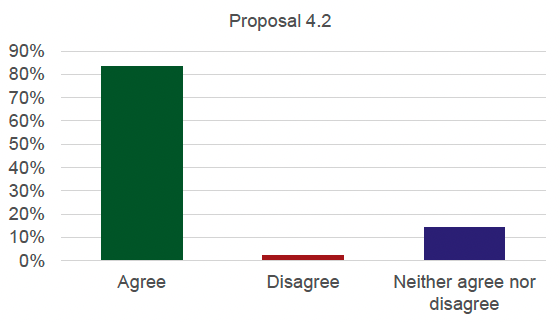
- 91% of respondents to the consultation answered this particular question.
- 83% of those respondents agreed with the proposal. 2% disagreed with the proposal and 15% neither agreed nor disagreed.
Proposal 4.3. Removal of the current time limitations on the refusal of discharge process in a Protected Trust Deed in certain circumstances - meaning a trustee can investigate this process prior to the completion of the contribution period.
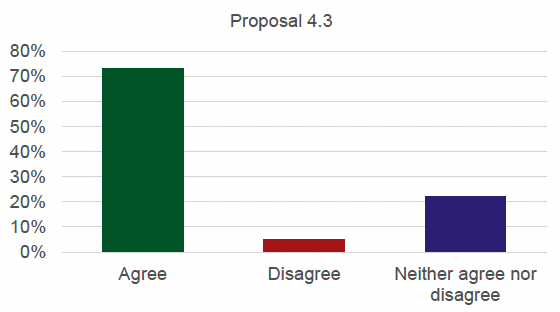
- 89% of respondents to the consultation answered this particular question.
- 73% of those respondents agreed with the proposal. 5% disagreed with the proposal and 22% neither agreed nor disagreed.
Proposal 4.4. Composition process to be investigated for bankruptcy.
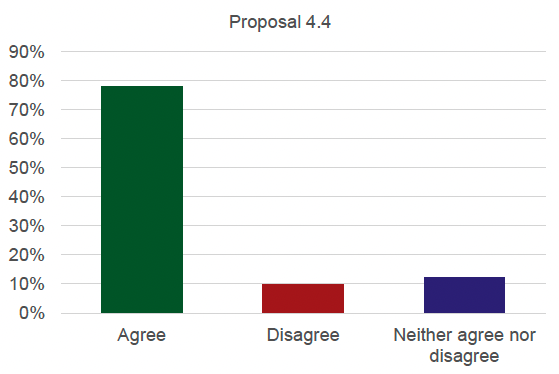
- 89% of respondents to the consultation answered this particular question.
- 78% of those respondents agreed with the proposal. 10% disagreed with the proposal and 12% neither agreed nor disagreed.
Proposal 4.5. Retention of the current trustee report and discharge process in bankruptcy.
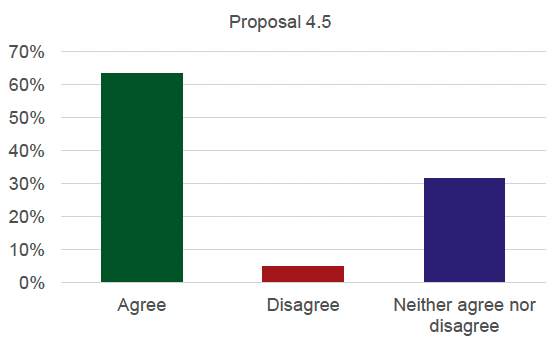
- 89% of respondents to the consultation answered this particular question.
- 63% of those respondents agreed with the proposal. 5% disagreed with the proposal and 32% neither agreed nor disagreed.
Proposal 4.6. Consideration of limited reform that would enable appointment of trustee of last resort (AiB) in those instances of continued debtor non-cooperation or at an earlier stage than currently available where the debtor cannot be traced.
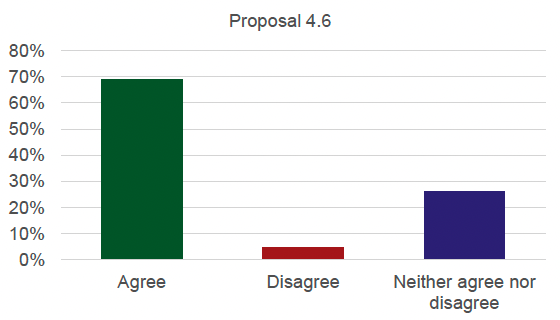
- 91% of respondents to the consultation answered this particular question.
- 69% of those respondents agreed with the proposal. 5% disagreed with the proposal and 26% neither agreed nor disagreed.
Proposal 4.7. No changes made to the existing Debt Arrangement Scheme composition process.
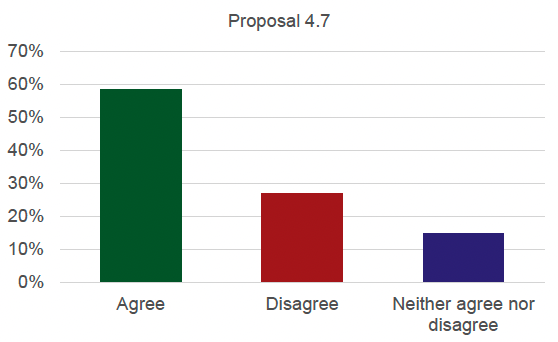
- 89% of respondents to the consultation answered this particular question.
- 59% of those respondents agreed with the proposal. 27% disagreed with the proposal and 14% neither agreed nor disagreed.
Proposal 4.8. Investigate the need to distinguish between the normal Debt Arrangement Scheme revocation process and the procedure that applies when an individual dies while the programme is ongoing, with a view to removing retrospective application of interest and charges in these circumstances.
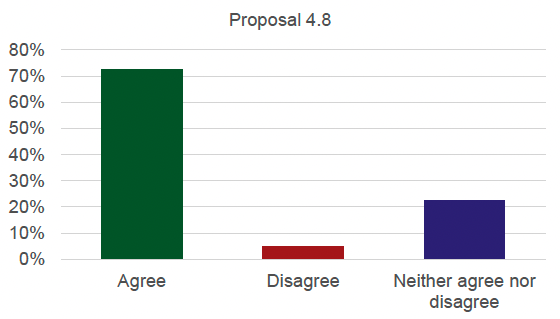
- 87% of respondents to the consultation answered this particular question.
- 73% of those respondents agreed with the proposal. 5% disagreed with the proposal and 22% neither agreed nor disagreed.
Proposal 4.9. Reform the basis for the prescribed rate of statutory interest and link this to the Bank of England base rate plus 2% - fixed at the date of bankruptcy.
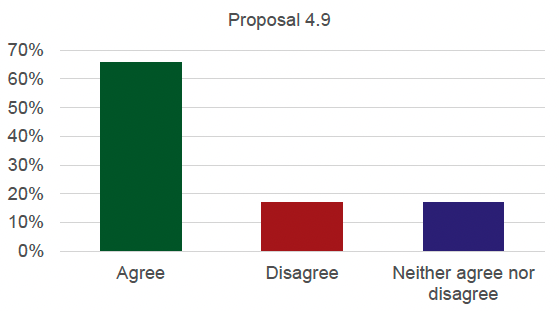
- 89% of respondents to the consultation answered this particular question.
- 66% of those respondents agreed with the proposal. 17% disagreed with the proposal and 17% neither agreed nor disagreed.
Theme 5 – improvements to debt recovery mechanisms (diligence)
Proposal 5.1. Proceed with the introduction of Information Disclosure Orders – initially involving non-government organisations.
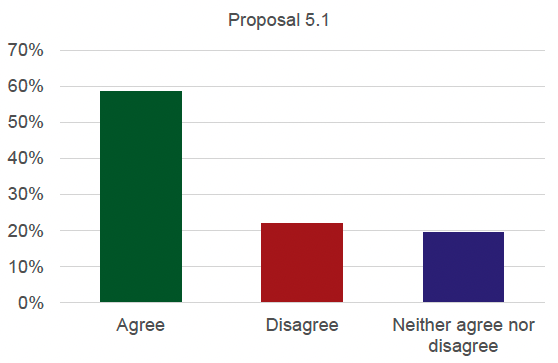
- 89% of respondents to the consultation answered this particular question.
- 59% of those respondents agreed with the proposal. 22% disagreed with the proposal and 19% neither agreed nor disagreed.
Proposal 5.2. Consideration of the family home and treatment in diligence and insolvency mechanisms to be further reviewed in the future review of Scotland's debt solution and recovery landscape.
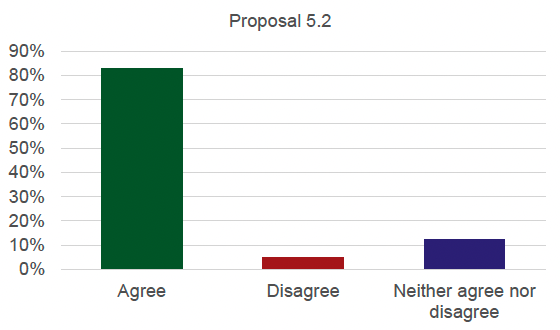
- 89% of respondents to the consultation answered this particular question.
- 83% of those respondents agreed with the proposal.
Proposal 5.3. Exceptional Attachment - increasing the value of sentimental items which cannot be attached from £150 to £500; and extending the redemption period from seven days to 14 days where assets are not removed from the premises.
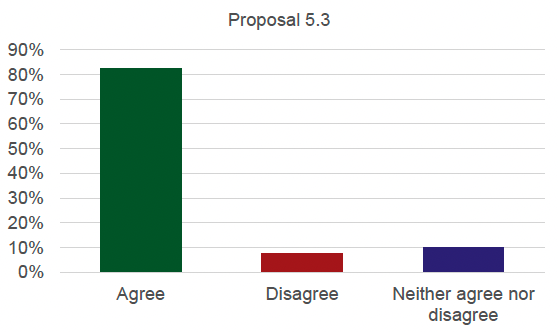
- 87% of respondents to the consultation answered this particular question.
- 82.5% of those respondents agreed with the proposal.
Proposal 5.4. Inhibition process - amending statutory forms to allow inhibition forms to include "process server" to ensure they can be submitted to Registers of Scotland by both sheriff officers and messengers at arms. The length of an inhibition will be retained at five years.
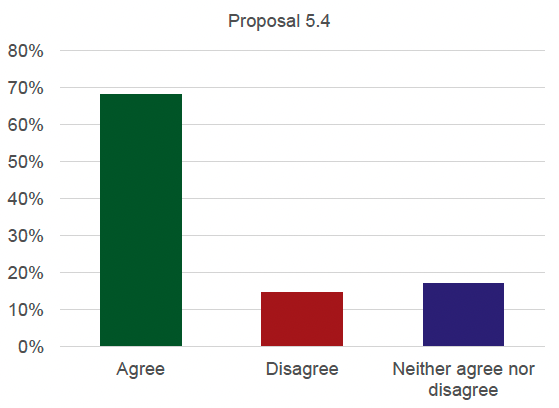
- 89% of respondents to the consultation answered this particular question.
- 68% of those respondents agreed with the proposal. 15% disagreed with the proposal and 17% neither agreed nor disagreed.
Proposal 5.5. Interim Attachment – maintain the current arrangements for interim attachment.
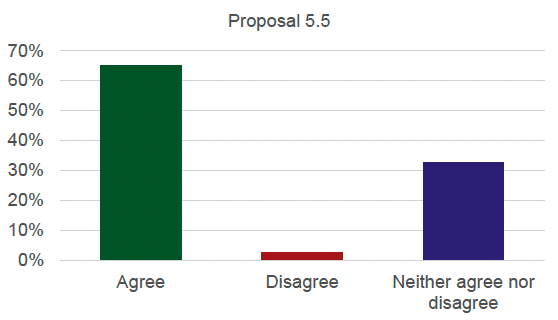
- 87% of respondents to the consultation answered this particular question.
- 65% of those respondents agreed with the proposal. 2.5% disagreed with the proposal and 32.5% neither agreed nor disagreed.
Proposal 5.6. Diligence on the dependence - ensuring the DAIP is issued when a diligence on the dependence application is submitted.
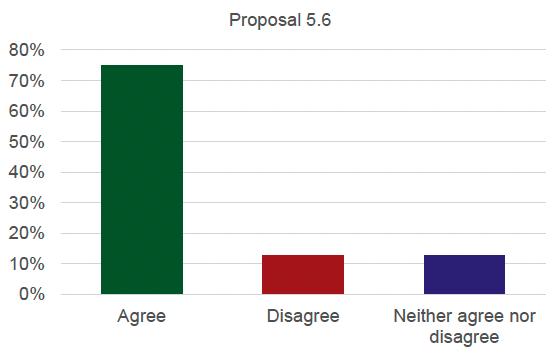
- 85% of respondents to the consultation answered this particular question.
- 75% of those respondents agreed with the proposal. 12.5% disagreed with the proposal and 12.5% neither agreed nor disagreed.
Proposal 5.7. Money Attachment - to remove restrictions on when a money attachment can be executed and greater flexibility by allowing this to be determined by a business's business hours. Carry out work to determine how equivalent provisions operate in other countries to establish if further changes would help to improve the effectiveness of this diligence.
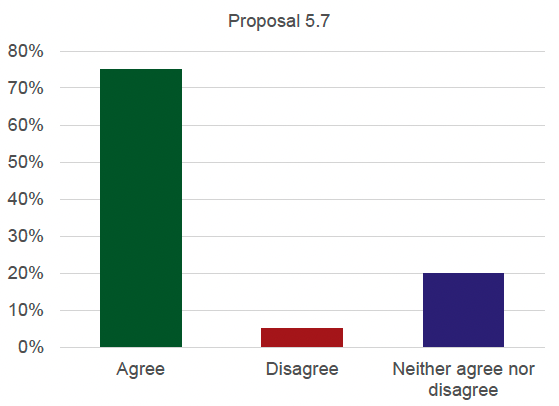
- 87% of respondents to the consultation answered this particular question.
- 75% of those respondents agreed with the proposal. 5% disagreed with the proposal and 20% neither agreed nor disagreed.
Proposal 5.8. Diligence against Earnings – look at options for introducing a 21 day timescale for employers to confirm that an earnings arrestment has been successful; determine if there is scope for introducing flexibility to enable employers to forward funds recovered quarterly, rather than monthly; explore the possibility of transferring the court role in the collection and distribution of conjoined arrestments to AiB; and investigate the need and impact of introducing the ability to vary an earnings arrestment.
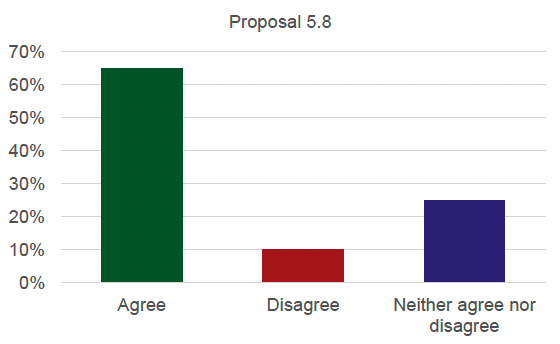
- 87% of respondents to the consultation answered this particular question.
- 65% of those respondents agreed with the proposal. 10% disagreed with the proposal and 25% neither agreed nor disagreed.
Proposal 5.9. Arrestment in Execution – consider introducing a requirement for banks to report where a bank arrestment is unsuccessful within 21 days; enable better use of technology; reduce duplication where arrestment schedules are sent recorded delivery; and carry out further work to determine what further changes should be made, including exploring the possibility of transferring functions from the courts to AiB.
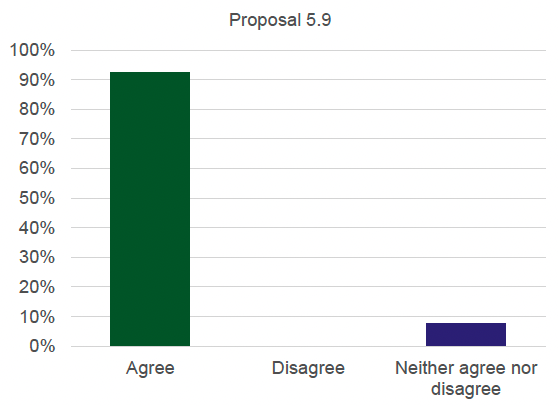
- 87% of respondents to the consultation answered this particular question.
- 92.5% of those respondents agreed with the proposal.
Proposal 5.10. Summary warrant process - extend the summary warrant process to Inhibitions, ensuring existing recall provisions for inhibition apply to summary warrants, and ensure the Debt Advice and Information Package is issued earlier in the process.
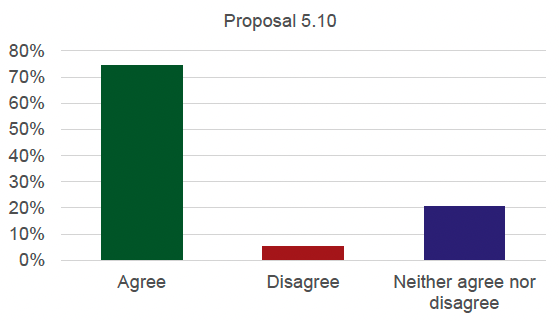
- 85% of respondents to the consultation answered this particular question.
- 74% of those respondents agreed with the proposal. 5% disagreed with the proposal and 21% neither agreed nor disagreed.
Proposal 5.11. Arrestment of ships – investigate the position with the arrestment to found jurisdiction to enable arrestment of ships to take place on a Sunday.
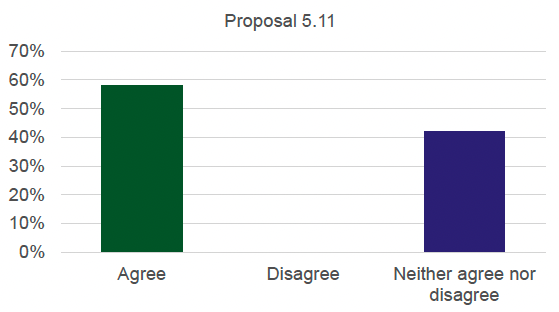
- 83% of respondents to the consultation answered this particular question.
- 58% of those respondents agreed with the proposal. No one disagreed with the proposal and 42% neither agreed nor disagreed.
Proposal 5.12. Residual Attachment – to be taken forward once a suitable alternative to adjudication of debt and land attachment is found which will be considered at Stage 3 of the review.
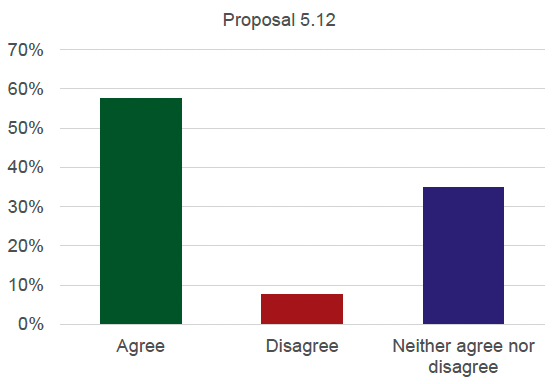
- 87% of respondents to the consultation answered this particular question.
- 57.5% of those respondents agreed with the proposal. 7.5% disagreed with the proposal and 35% neither agreed nor disagreed.
Proposal 5.13. Collection of statistical information – capture additional information to include the outcome of diligence to help inform future reviews.
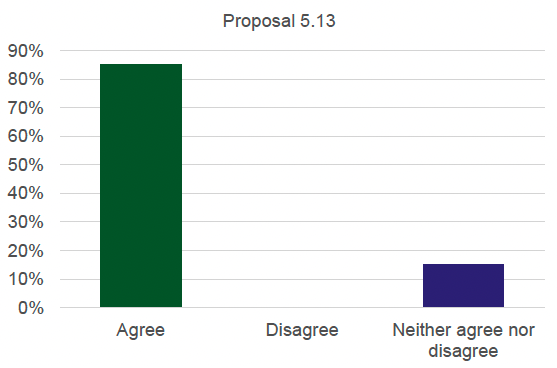
- 87% of respondents to the consultation answered this particular question.
- 85% of those respondents agreed with the proposal.
Contact
Email: policy@aib.gov.uk
There is a problem
Thanks for your feedback